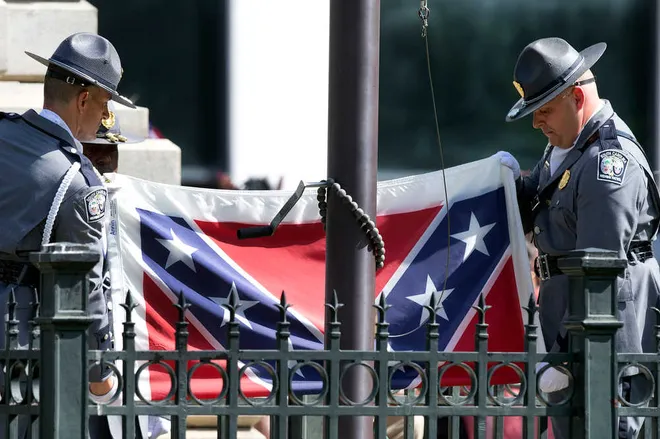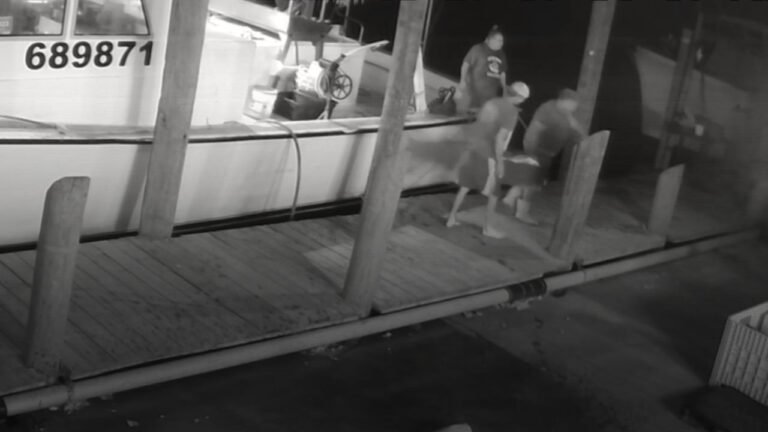Confederate Flag Removed from South Carolina Capitol Grounds in 2015: A Turning Point in Racial History
COLUMBIA, SOUTH CAROLINA — On this day in 2015, the Confederate battle flag was officially removed from the South Carolina State House grounds in a powerful and emotional moment that signaled a major shift in how the state and the country confronted its past.
The removal marked the end of a decades-long debate about the flag’s presence at the Capitol — a symbol that many saw as representing slavery, white supremacy, and resistance to civil rights, despite defenders calling it a piece of Southern heritage.
Why the Flag Was There in the First Place
The Confederate flag was first raised over the South Carolina State House dome on April 11, 1961, during the centennial of the Civil War. While it was framed as a historical commemoration, it coincided with the rise of the Civil Rights Movement, and many saw the move as a symbol of defiance against desegregation.
Though intended as temporary, a 1962 resolution by state lawmakers gave the flag indefinite presence, with no removal process outlined.
Public Backlash Grew Over Time
Starting in the 1970s, civil rights groups and Black leaders pushed back against the flag’s presence. The NAACP launched a tourism and economic boycott in 1999, urging conventions and travelers to avoid South Carolina until the flag was taken down.
In 2000, a compromise law moved the flag from the dome to a 30-foot pole next to a Confederate soldier statue on Capitol grounds. However, the flag remained protected under state law, and couldn’t be removed without a two-thirds vote from the legislature.
The Tragedy That Sparked Action
The tipping point came on June 17, 2015, when Dylann Roof, a white supremacist, murdered nine Black churchgoers at the historic Emanuel AME Church in Charleston. Images soon surfaced of Roof posing with the Confederate flag, reigniting national outrage.
In the wake of the massacre, public sentiment shifted rapidly. Even those who had long defended the flag changed course. Then-Governor Nikki Haley, who had previously resisted calls for removal, announced her support for taking the flag down.
The Moment It Came Down
Just ten days after the attack, activist Bree Newsome made headlines when she climbed the flagpole and removed the Confederate flag herself in a powerful act of civil disobedience. She was arrested, but her actions added urgency to the growing demand for change.
On July 9, 2015, the South Carolina Legislature passed a bill calling for the flag’s removal. The next day, in a live broadcast ceremony watched across the country, the South Carolina Highway Patrol honor guard took the flag down for the final time.
It was later moved to the South Carolina Confederate Relic Room and Military Museum, where it now exists as a historical artifact rather than a public symbol.
A Decade Later: Where Do We Stand?
Since 2015, the removal of Confederate symbols has continued across the country. More monuments were taken down in the years that followed than during any other period since their original rise between 1890 and 1930.
While the pace of removals has slowed, there has been no widespread push to restore them, and new dedications have mostly vanished from public debate.
As historian Kevin Levin noted in his commemoration post, this moment helped close a chapter of Civil War memory in the South — though conversations about race, memory, and justice continue today.
Were you in South Carolina when the flag came down in 2015? Do you think the state has made progress since then? Share your story in the comments — SaludaStandard-Sentinel.com welcomes your voice in this ongoing conversation.







